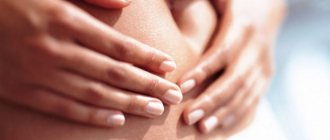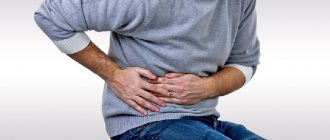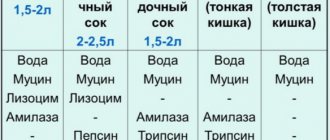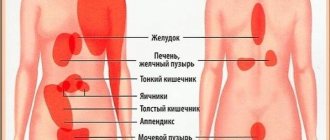Amoxiclav drug
The unique antibiotic amoxiclav is classified as a powerful drug that is widely used to rid the human body of bacterial infections. The active ingredients in the drug are easily tolerated by patients, side effects are rare, so the drug is recommended for widespread use by all age categories.
The destructive effect of amoxiclav tablets is due to the clavulanic acid included in its composition. The substance helps amoxocillin not to react to the action of lactamases produced by affected cells.
Dynamics in the body
The first component is amoxicillin, which is a semisynthetic antibiotic with extended action. It actively destroys bacteria that react to the action of the drug, but does not affect those that secrete a harmful enzyme. Amoxicillin destroys the walls of bacteria, which leads to the death of pathogens.
The second component of the drug is clavulanic acid, which is a beta-lactamate similar to penicillin in its chemical action. It inhibits beta-lactamases that are resistant to penicillins and cephalosporins. Some types of gram-positive and gram-negative microorganisms produce lactamases, which leads to the destruction of amoxicillin before it can act on bacteria and viruses.
Clavulanate acts as a blocker of harmful enzymes and restores the sensitivity of bacterial pathogens to penicillins, while significantly reducing the resistance of the antibiotic drug. The effect of the antibiotic is less on bacteria producing beta-lactamases of the first chromosomal type. Clavulanic acid is not used separately from amoxicillin; it expands the effect of amoxiclav only when paired with penicillin antibiotics.
Reasons for the development of resistance
The increase in the indicator occurs according to the following criteria:
- inactive bacterial pathogens of classes B, C, D produce lactamases that do not perceive the action of clavulanate;
- proteins that bind penicillin have become deformed or destroyed, and the work of the antibiotic has decreased significantly;
- Some gram-negative microorganisms have a cell wall that is impermeable to amoxillin, which primarily leads to increased resistance.
Application of amoxiclav
An antibiotic treats inflammatory diseases caused by microorganisms that are sensitive to the drug:
- diseases of the ear, throat, nose of infectious origin (these include tonsillitis, otitis media, pharyngeal abscesses, pharyngitis, sinusitis, rhinitis, etc.);
- diseases of the ureters (prostatitis, cystitis) of an infectious nature;
- inflammation of the female genital organs;
- diseases of the lower respiratory tract (chronic and acute bronchitis, pneumonia);
- infectious infections of bone tissue and connective cartilage;
- bacteriological inflammation of the skin and tissues;
- inflammation of the gallbladder and ducts (cholecystitis);
- odontogenic type infections.
Existing contraindications for taking amoxiclav tablets
Not all patients can be treated with the drug; some diseases are not suitable for treatment with an antibiotic:
- lymphatic leukemia;
- infectious mononucleosis;
- in the anamnesis, when using clavulanate or amoxicillin in treatment, the patient developed holistic jaundice;
- hypersensitivity to cephalosporin, penicillin, beta-lactam antibiotics;
- increased reaction to the active substances of the drug.
For severe liver and kidney diseases and developing failure of these organs, amoxiclav is prescribed with caution and under medical supervision.
Associated side effects when taken
Amoxiclav, if it causes unpleasant effects, they are short-term and do not cause permanent abnormalities in the body:
- on the part of the circulatory system, leukemia of a reversible nature, the formation of blood clots is observed, in isolated cases symptoms of pancytopenia and eosinophilia are observed;
- the digestive system responds with side effects in the form of nausea and vomiting, loss of appetite, diarrhea, pain in the abdomen, impaired liver function, in some cases jaundice, hepatitis, colitis occur;
- allergic reactions cause rash, itching, urticaria, in isolated manifestations there is swelling, vasculitis, anaphylactic shock, pustulosis, dermatitis;
- the nervous system responds to the action of the antibiotic with dizziness, sometimes cramping pain in the limbs, high agitation and hyperactivity, sleep disturbance and anxiety;
- on the part of the urinary system, interstitial nephritis develops, symptoms of crystalluria are observed;
- sometimes secondary superinfection develops.
Proper stomach protection when taking Diclofenac
Proper protection of the stomach when taking Diclofenac includes medications - tablets that reduce acidity and protect the mucous membrane, and non-drug - diet and daily routine when treating with anti-inflammatory drugs.
Proton pump inhibitors
This group of drugs ranks first in frequency of use. They are prescribed 1-2 times a day after meals, it is advisable to take the entire course of NSAID treatment in the evening. Doses of basic medications:
- Omeprazole: 20 -40 mg per day;
- Pantoprazole: 20-40 mg per day;
- Esomeprazole: 40 mg per day;
- Lansoprazole: 30-60 mg per day.
| Contraindications | Side effects |
|
|
H2-histamine receptor blockers
H2-histamine receptor blockers also affect the process of acid formation through the biologically active substance - histamine. They appeared earlier than the previous group on the pharmaceutical market and are less effective, but can also be used for the prevention and treatment of gastrointestinal complications. Prescribed:
- Ranitidine 300-450 mg per day;
- Famotidine 10-20 mg per day.
| Contraindications | Side effects |
|
|
Gastroprotectors and antacids
Antacids are substances that neutralize the acidic environment in the stomach with the formation of the corresponding salts. Local antacids are more often used - they affect only the epithelium inside the stomach and are not absorbed into the blood:
- Rennie;
- Almagel;
- Phosphalugel;
- Maalox.
Almagel
Maalox
Rennie
They contain calcium, magnesium or aluminum salts. They act quickly and relieve acid damage for stomach pain and heartburn.
There may be side effects during use:
- aluminum constipations;
- diarrhea from magnesium;
- calcium absorption disorder;
- impaired absorption of other medications when the interval between doses is less than 2-3 hours.
Gastroprotectors act by forming a protective film on the surface of the stomach.
Gaviscon - sodium alginate - in the presence of hydrochloric acid turns into an amorphous mass, which neutralizes the aggressive environment for a long time. Can even be used by pregnant women.
A popular drug in this area is Denol - bismuth dipotassium tricitrate. It acts like Gaviscon, forming a film of proteins on the surface. Also promotes the synthesis of prostaglandins and mucus secretion. It is also actively used in antiulcer therapy.
Pregnant and breastfeeding women should not use Denol. It can also cause constipation and allergies.
Watch this video about what to do if your stomach hurts after taking NSAIDs:
Forms of production and sale of the antibiotic amoxicillin clavunate
Common forms of sale are presented as:
- tablets;
- powder for preparing a solution;
- powder for injections (preparation of solution).
Tablets vary in the number of components they contain:
- tablets 375 contain 125 mg of clavulanate and 250 mg of amoxicillin;
- tablets 625 contain 125 mg of clavulanate and 500 mg of amoxicillin;
- 1000 tablets contain 125 mg of clavulanate and 850 mg of amoxicillin.
The tablets contain excipients for binding medicinal components, these include silicon dioxide, talc, cellulose, magnesium stearate. It is recommended to dissolve tablets of any concentration in half a glass of water, but if this is not possible, then chew the drug thoroughly and wash it down with a large volume of liquid.
Powders for solution:
- powders 125 contain 125 mg of antibiotic and 31.2 mg of clavulanate;
- 250 powders contain 250 mg of antibiotic, 62.5 mg of clavulanate:
- powders 400 contain 400 mg of antibiotic and 57 mg of clavulanate.
In powders, sodium citrate, silicon dioxide, sodium saccharinate, citric acid, and flavorings are used as additional components. Powders are prepared according to the instructions, adding the specified amount of liquid and bringing the mixture until all dry particles dissolve.
Powders for injection solution:
- drug 500 contains 500 mg of antibiotic, produced in the form of sodium salt and 100 mg of clavulanic acid;
- drug 1000 consists of 1000 mg of antibiotic and 200 mg of clavulanic acid.
A solution for intravenous administration is prepared by diluting the dry mixture in a special solution for infusion.
Pharmacological action in the body
After taking the tablets orally, the active ingredients of the medicine are actively absorbed from the stomach and intestines, regardless of food intake . Both components are absorbed in approximately the same period of time; the largest amount of the drug in the blood is detected an hour after use.
Amoxicillin and clavulanate enter the tissues and fluids of the body, the former accumulates in the liver, prostate, tonsils, muscle tissue, saliva, bronchial mucus, and synovial fluid. The BBB barrier is not overcome by the drug if the meninges are not subject to inflammatory processes, but the placenta does not serve as an obstacle for it and an insignificant amount of the substance can be found in breast milk.
Amoxicillin is not fully involved in metabolic processes, but clavulanic acid is metabolized more intensively. The connection with blood proteins is weak , to an insignificant extent. The drug is excreted from the human body by the kidneys; a very small part of the drug is removed with the contents of the intestines and lung secretions. After an hour and a half, the drug is half eliminated from the body.
Why does my stomach hurt after taking antibiotics?
Once in the stomach, antibiotics kill many bacteria. Since the digestive system requires the presence of beneficial bacteria necessary for normal digestion, a decrease in their number affects the human condition. The entire intestinal mucosa is made of beneficial bacteria that are responsible for certain functions. After taking a course of antibiotics, the gastric mucosa looks more like a scorched desert - it becomes cracked and dry. Hence the pain.
Not only antibiotics can reduce the number of beneficial bacteria, but also poor nutrition and diseases of the gastrointestinal system. All this, combined with poor ecology, causes frequent feelings of discomfort in the stomach.
This condition is called dysbiosis. It is characterized by individual characteristics:
- Unstable stool, constipation or diarrhea may occur.
- Increased gas formation.
- Abdominal pain, and the nature of the pain and its localization may be different.
- Feeling of fullness in the stomach even when eating a small amount of food.
- Food allergies.
- Anemia.
This brings a lot of trouble to children and parents. But it is quite possible to reduce the harm from antibiotics in order to reduce the risk of developing dysbiosis.
How to use amoxiclav?
Children under 12 years of age are not prescribed amoxiclav +. The daily dosage for clavulanate for adults is 600 mg, children take 10 mg per kilogram of body. Amoxicillin is dosed at a daily dose of 6 g for adult patients and 45 mg per kilogram of a child’s body.
For parenteral administration, dissolve the dry mixture from the bottle in a special liquid for injections:
- for 600 mg of mixture you need 10 ml of water;
- 1.2 g of mixture will require 20 ml of liquid.
The solution is injected intramuscularly slowly, taking about 4 minutes for a complete infusion; the time of an intravenous drip is about 40 minutes. The resulting ready-made solution cannot be frozen.
Intensity of taking pills
In moderate and mild standard cases, a 375 tablet is prescribed every 8 hours. Sometimes the regimen is changed to taking a 500 tablet every 12 hours. Severe forms of the disease require taking one tablet 500 or 875 every 8 hours every 12 hours. The duration of treatment is from 6 to 15 days , this time is determined individually.
Patients suffering from odontogenic infections use the drug according to the system: 1 tablet 250 every 8 hours, or tablet 500 every 12 hours, treatment is carried out for 5-6 days.
If the patient has a concomitant disease in the form of renal or liver failure, then the interval between taking tablets is increased to a day.
Use of suspension for children
For children, the drug is prescribed taking into account their weight and age. Infants up to 3 months old are prescribed 30 mg of medication per kilogram of body (daily dose), which is divided into equal parts and given after the same amount of time. The measuring spoon contains 5 ml of medicine.
After three months, the drug is prescribed at a dose of 25 mg per kilogram of body, the daily dose is divided into two doses. If the infection is not severe, then the medicine is given at 20 mg per kilogram of body, and the dose is divided into three doses.
Severe cases of infectious infection of the body require the use of a medicinal dose of 30 mg per kilogram of the child’s body in two daily intervals.
Using amoxiclav quiktab
The tablet is dissolved in water (half a glass), stirred thoroughly and drunk. If you have to chew the medicine, it is better to do it before eating. Children over 12 years of age and adult patients take tablet 625 several times a day , 2 or 3 times are recommended. Severe disease requires replacing the tablet with a stronger one (1000 mg) taken twice a day, but such treatment is not recommended for more than 14 days.
Gastritis pain: first symptoms
An inflammatory disease of the gastric mucosa, gastritis, is manifested by severe symptoms of pain and disruption of the functioning of almost all organs of the gastrointestinal tract. Pathology appears against the background of poor nutrition, fasting, addiction to spicy foods, and alcohol abuse.
Inflammation can also be provoked by a strong stress factor, a psychotraumatic situation (stressful gastritis), then pain and other manifestations are psychosomatic. In addition to pain, gastritis causes long-term symptoms, a person feels unwell, insomnia, loss of appetite, and apathy appear.
A severe complication of gastritis can be internal bleeding and the appearance of ulcers, which are characterized by hunger pain, weight loss, and discomfort in the abdomen and intestines.
Pain due to inflammation of the stomach (gastralgia) has no time frame and appears depending on the quality of food, emotional state and concomitant gastrointestinal disorders.
To relieve the symptoms of the disease, you must first normalize your diet, that is, fight the root cause of the disease, and only then begin drug therapy.
Symptoms of gastritis
Clinical symptoms of the disease are determined by the stage of the pathological process and internal factors affecting the condition of the stomach. Almost all patients complain of symptoms of pain, discomfort in the abdomen after eating, and the reaction of the stomach to experiences.
In patients with gastritis, the acidity of gastric juice is disturbed; it can be either low or high. Symptoms depend on the aggressiveness of the environment, so drugs to normalize acidity help relieve discomfort.
Severe pain in gastritis is associated with irritation of the nerve endings of the affected mucous membrane, which is affected by temperature, food quality, and mental state.
The disease can be acute and chronic with periods of relapse and subsidence of the symptomatic complex. During acute manifestations of gastritis, a person loses weight, refuses to eat due to severe pain, and suffers from constant bowel dysfunction.
Inflammation of the stomach can be accompanied by a peptic ulcer of the esophagus when reflux is present - the return of gastric contents into the esophagus. This condition is dangerous due to aspiration, as there is a risk of food and acid getting into the lungs or bronchi.
Inflammation of the stomach has a variety of clinical manifestations, which occur in different ways in patients: after eating, during physical activity, or during stress. The symptoms of the disease can be observed especially clearly during the experience of fear, when a spasm occurs, the secretion of gastric juice increases and hydrochloric acid begins to corrode the walls of the stomach.
Gastritis? Ulcer? To prevent a stomach ulcer from turning into cancer, drink a glass...

The best FOLK remedy for GASTRITIS and stomach ulcers!
At this time, hunger pains, nausea, and indigestion in the form of diarrhea appear. Increased pain occurs after spicy foods, sour foods, carbonated drinks, and especially low-alcohol drinks. These are temporary symptoms, but there are permanent manifestations that are independent of food and the general condition of the person.
Heartburn, regular belching, general malaise, abdominal discomfort - all this accompanies the patient constantly, and after the influence of a negative factor it only intensifies.
Specific symptoms for acute gastritis:
- prolonged aching pain in the stomach area, in the back, spreading to the entire abdomen;
- heartburn after eating, belching, the stomach is often bloated and visually enlarged;
- frequent passing, especially against the backdrop of worries;
- long-term symptoms: headaches, weakness, irritability, increased sweating;
- neurological manifestations, back pain, pale skin;
- bad breath, dental diseases, plaque on the tongue;
- Nausea often appears in the morning and there is no appetite;
- after eating there is always discomfort and heaviness.
Vomiting can temporarily relieve the unpleasant symptoms of nausea and pain, but an empty stomach is even more exposed to the aggressive influence of hydrochloric acid.
Inflammation often appears against the background of increased acidity, but it happens with a low and normal pH, which helps to relieve symptoms more quickly.
Gastritis and acidity
What are the manifestations of gastritis with low acidity?
- Frequent rumbling in the stomach, a feeling of a full stomach, but at the same time of hunger.
- The pain is moderate and subsides after eating a diet.
- Belching and heartburn are often present.
- Abnormal stool, constipation gives way to diarrhea.
- Severe halitosis and gum problems.
During the period of exacerbation, a person suffers from terrible pain in the stomach and throughout the abdomen.
The acute process can be stopped only after long-term drug therapy and diet.
Pain during exacerbation of gastritis has the following features:
- They appear in the morning, on an empty stomach and after eating a product prohibited for gastritis.
- They are localized in the stomach area, spread to the entire abdomen and lumbar region of the back, and discomfort is less often felt between the shoulder blades.
- Pain relief occurs after vomiting, but symptoms soon return.
Gastralgia appears not only with inflammation of the stomach, and may indicate more serious disorders of the gastrointestinal tract.
Differential diagnosis of pain
The following diseases may be hidden behind the symptoms of pain due to stomach inflammation:
- Peptic ulcer of the stomach and duodenum - in this case there will be hunger pains that occur 2-8 hours after eating. With an ulcer, the patient gradually loses weight and has bowel movements.
- Gastric erosion is a disease with the formation of defects in the mucous membrane of the organ, it manifests itself less severely and responds well to treatment, and can occur as a consequence of gastritis.
- Peptic ulcer of the esophagus - with reflux esophagitis, which often accompanies gastritis, ulcerative lesions of the esophagus can occur, and this disease gives no less severe symptoms that affect the patient’s quality of life.
- A hiatal hernia is a disease characterized by the release of abdominal organs into the chest. With a hernia of the PAD, some symptoms are quite similar to gastritis, so differential diagnosis is necessary.
How to relieve stomach pain?
To eliminate pain, it is necessary to take symptomatic medications, change diet and inject analgesics.
What can you do at home?
- Avoid self-medication with drugs such as aspirin, analgin and other analgesics, which often become the main cause of gastritis.
- Change your diet to eliminate hunger pangs and soften the effect of acid on the stomach.
- Use folk recipes, make medicinal decoctions, infusions based on anti-inflammatory plants, apply warm compresses to the stomach.
- Take medications prescribed by your doctor.
Drug therapy
What medications help relieve pain due to stomach inflammation?
- Antacids to reduce the acidity of gastric juice are prescribed for gastritis and other diseases with high acidity. These drugs eliminate heartburn and protect the gastric mucosa.
- It is better to administer painkillers intramuscularly, so as not to further irritate the stomach: Analgin, Baralgin, Spazmalgon, Papaverine.
- Antidiarrheal and antiseptic agents: Bismuth Subnitrate and Diosmectite.
- The drugs Smecta and activated carbon will have an antitoxic effect.
Once gastritis is diagnosed, it is necessary to change the diet and begin drug treatment.
During the acute period, it is recommended to switch to pureed warm food, drink a lot of water and vegetable juices, and give up meat and other rough foods. You need to eat often, take breaks between meals for no more than two hours, so as not to provoke pain.
Healthy products and folk recipes
For stomach inflammation, it is especially effective to drink vegetable juices, but only fresh ones. They contain nutrients and do not irritate the organ. It is useful to prepare pumpkin, potato, beet or carrot juice to improve your well-being and reduce pain.
For gastritis, it is useful to eat honey and drink milk.
There are no restrictions on the use of honey for inflammation of the stomach, because it has an antibacterial effect, destroying unfavorable microflora, and does not affect the acidity of gastric juice. Milk envelops the mucous membrane, protecting it from aggressive products, but it is better to avoid fermented milk products if gastritis with high acidity is diagnosed.
With reduced acidity, rosehip infusion will help cope with pain. It contains vitamin C, calcium, iron, magnesium. If the pH value is disturbed, it is not advisable to drink rose hips.
Herbal infusions have a good analgesic effect: rose hips, yarrow, sage, chamomile, oak bark.
The use of amoxiclav in the treatment of certain diseases
Angina
Adults are given a 325 mg tablet three times a day. If the course of the disease is not complicated, then you can limit yourself to taking one tablet with a break of 12 hours. At the discretion of the doctor, the dose of the medicine can be increased if he sees the need.
For children, treatment is prescribed in the form of a spoonful of suspension (5 ml) , and the intervals between doses are prescribed by the doctor, and it is important for the child not to violate the sequence of the chosen therapy. The doctor may increase or decrease the rate.
Sinusitis
To treat the disease, the dosage is 500 tablets three times a day. The duration of treatment depends on the patient’s condition, but the medicine must be taken for at least 5 days.
Is there an overdose?
It can be easily avoided if you follow the norm prescribed by your doctor; this applies to adult patients and pediatric patients. In order not to take extra milligrams, you need to carefully read the instructions and learn how to dilute the solution and suspension. Unpleasant symptoms may manifest themselves if the weight of the prescribed pill is increased or if it is taken much more often. Main side effects if the dosage is exceeded:
- pain in the peritoneum;
- nausea and vomiting;
- diarrhea, upset stomach and intestines;
- excited state;
- convulsive pain and reflexes in the limbs (in severe cases).
If symptoms of excess dosage have been recently identified, then a deep gastric lavage is performed, then activated charcoal is prescribed depending on body weight. The patient is under the supervision of a doctor. If an overdose causes severe impairment, hemodialysis is indicated.
Main mistakes in injection technique
The following technical violations can lead to adverse consequences:
- insertion of a needle outside the upper outer quadrant of the buttock (nerve or vessel damage);
- movement of the needle towards and away from you during insertion – soft tissue injury;
- failure to maintain sterility (dirty hands, touching the needle or reusing it);
- non-compliance with the expiration dates of the medicine;
- incomplete insertion of the needle into the thickness of the muscle;
- repeated injection at the same injection site;
- an injection into an inflamed or wounded skin surface;
- inserting the needle at an angle less than or greater than 90 degrees.
Diclofenac can lead to unpleasant gastrointestinal symptoms due to side effects on the gastrointestinal mucosa and gastrointestinal motility. This causes pain, bleeding and disruption of the integrity of the membrane. To cope with these complications, you need to make a correct diagnosis, which requires examination and consultation with a gastroenterologist.
To prevent and treat such complications, different groups of drugs are used: acid blockers, antacids, gastroprotectors.
We recommend reading about how to use Diclofenac for neuralgia. From the article you will learn how to inject Diclofenac for neuralgia, and whether you should give preference to Movalis and analogues of the drug for blocking intercostal neuralgia. And here is more information about how to use Diclofenac for lower back pain.
With injection administration, the development of local complications is also possible, especially if the technique of administering medications intramuscularly is violated. To eliminate symptoms, compresses, iodine and symptomatic medications are used orally.
Mutual combination with other drugs
Undesirable effects may occur when taking amoxiclav in combination with other medications:
- slower absorption of the drug occurs when taken simultaneously with antacids, glucosamine, aminoglycosides;
- absorption of amoxiclav is accelerated when combined with ascorbic acid;
- the concentration of amoxicillin increases in the body in combination with allopurinol, phenylbutazone, diuretics, non-steroidal anti-inflammatory drugs and other drugs that block tubular secretion;
- the combined use of coagulants with amoxiclav leads to an increase in prothombin time, so this combination should be prescribed simultaneously with caution;
- amoxicillin clavulanate increases the toxic effect of methotrexate;
- the drug, when used together with allopurinol, causes exanthema;
- simultaneous use of the drug together with rifampicin makes their action mutually antagonistic and at the same time weakening the effect against bacteria;
- the effectiveness of amoxiclav is reduced by the simultaneous use of macrolides, tetracyclines, sulfonamides and other drugs from the group of bacteriostatic antibiotics;
- the removal of amoxicillin from the body slows down while taking probenecid, which increases its concentration in the body;
- oral contraceptives become less effective under the influence of amoxiclav.
Features of application
For people with infectious mononucleosis and lymphocytic leukemia, the use of amoxiclav, which contains amoxicillin, which causes an erythematous rash .
If patients have a tendency to allergic reactions, then the medication should be prescribed with caution. In the process of taking a significant dosage of the drug, it is necessary to conduct a laboratory test of the functionality of the kidneys and liver. If violations are observed, the norm is reduced or the intervals between doses are made longer.
To minimize side effects in the digestive tract and stomach, it is advisable to drink the drug during breakfast, lunch or dinner . False blood glucose levels may be detected when amoxiclav is used in treatment.
There is no information that amoxiclav affects the performance of the driver and work requiring special attention, so it can be taken without taking into account such circumstances. During treatment with the drug you need to drink enough water. When prescribing to children, be sure to take into account all the subtleties associated with age and body weight.
Useful video
Watch this video about how to take and what medications to combine NSAIDs with to avoid complications:
Similar articles
- Harm of Diclofenac: how dangerous the drug is, how it affects...
What may be the harm of Diclofenac. How dangerous is the drug for the human body, how does it affect the blood. Can it be dangerous for a dog or cat? What are the symptoms of an overdose, how can you remove it from the body. Read more - Diclofenac for lower back pain: how to use ointment...
How Diclofenac can help with lower back pain. How to properly give injections for back pain, take pills or use suppositories. How to treat back pain with ointment. Read more
- Diclofenac for neuralgia: how and how many injections to give...
How to properly use Ambroxol for inhalation, what is the optimal dosage for adults and children. Is it possible to use the syrup for a nebulizer according to the instructions, does it need to be diluted with saline, the proportions for cough. Read more
- Diclofenac for toothache: what will help better...
Is it possible to take Diclofenac for toothache and gum inflammation? Which form is better - painkilling injections, tablets, suppositories. How to quickly help with toothache. Read more
Amoxiclav analogues
There are numerous analogues of the drug for use in treatment; for example, you can choose one cheaper, but with the same effectiveness. The price largely depends on the manufacturer. The list of medications can be extended, but the main substitutes for amoxiclav on the pharmaceutical market are:
- moxiclav;
- augmentin;
- bactoclav;
- ranclave;
- clavocin;
- flemoclav;
- amovycombe;
- honeyclave
For example, the drug Augmentin tablets has a lower price; you can also choose from Russian manufacturers, in particular, amoxicillin.









